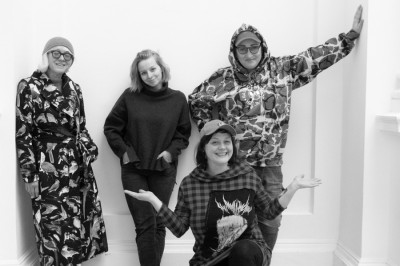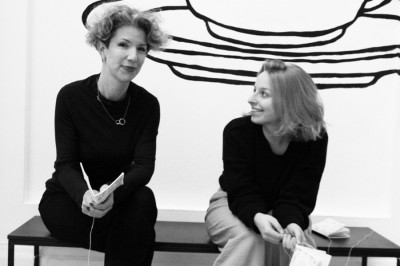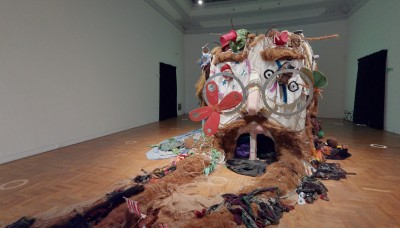Spring Never Comes Again… Children and Art in the 20th & 21st Centuries
31.03 – 18.06.2023 Spring Never Comes Again… Children and Art in the 20th & 21st Centuries
Zachęta – National Gallery of Art
curator: Joanna Kordjak
curatorial collaboration: Julia Harasimowicz
cooperation: Dominika Kaszewska, Michał Kubiak, Zuzanna Andruszko
research consultation: Adris Brinkmanis, Anaïs Masson, Anna Szczepańska
historical context: Franz Čižek, Friedl Dicker-Brandeis, Fernand Deligny, Célestin & Élise Freinet, Jef Geys, Gertrud Grunow, Francisco Ferrer y Guardia, Malka Haas, Erika Giovanna Klien, Anna ‘Asja’ Lācis, Ludwig Hirschfeld-Mack, Palle Nielsen, Alma Siedhoff-Buscher, Sigma Group, Ilse Weber
contemporary artists: Paweł Althamer, Zbyňek Baladrán, Yto Barrada, Johanna Billing, Jenny Brockmann, Monster Chetwynd, Alicja Czyczel, Discoteca Flaming Star, Vincent Epplay, Priscila Fernandes, Péter Forgács, Adelita Husni-Bey, Ane Hjort Guttu, Holobiont Group, Eva Kotátková, Barbara Kinga Majewska, Anaïs Masson, Alicja Nauman, Anna Nowicka, Olivia Plender, Maxence Rifflet, Minitremu, Jaśmina Wójcik, Teodor Zaica, Alfredo Zinola
This exhibition title recalls the words of Franz Cižek, a pioneer of arts-based education from the early 20th century, which refer to our childhood years and sound like a warning, but also a call to responsible action. Are we, as adults, able to meet this challenge especially when dealing with problems facing children and young people today – violence on a day to day basis, experiences involving pandemics, wars and exile? What can we do to improve young people’s wellbeing, to ensure their voices are clearly heard? What can art and the tools artists provide us with do in terms of shaping children’s identities and empowering their sense of agency?
Our exhibition references the practice of pioneers in modern pedagogy (such as Janusz Korczak, Maria Montessori and Célestin Freinet) and alternative education from the early and middle 20th century (starting with modernist conceptions developed within the Bauhaus school of art and design), as well as contemporary references to these sources. The common denominator between them is how they support children's creativity through interdisciplinary processes, the teaching of diverse skills and allowing reality to be experienced using a range of senses.
We thus present examples of artistic practices which include children as fully fledged and active participants in the creative processes. A key feature is activities with young people who come from social groups excluded due to ethnic associations, their economic status and disabilities. We show the ways in which creative practices allow them to recover full feelings of decency and inclusion in action and dialogue.
By referencing key historical sources we also pose timely questions about possible ways education can evolve (including education through the arts) in the 21st century. This includes new ways of presenting knowledge outside of school based systems: a rejection of 19th century style curriculum hierarchies, making use of knowledge about the subconscious and dreams, with emphasis on development through contact with one’s own body and the natural world.
The exhibition also includes examples of artistic practices in which children reveal to adults alternative forms of social relations. We show how collaborative arts activities based on an exchange of knowledge, experiences and partnership working can teach civic responsibility and empathy.
Friedl Dicker-Brandeis
in association with Lentos Museum in Linz
The solo exhibition by Austrian artist Friedl Dicker-Brandeis (1988–1944) presents the work of this outstanding painter, interior designer and designer, graduate of the Bauhaus in Weimar, a student of Johannes Itten, Oskar Schlemmer and Paul Klee (her work is little known in Poland). The focus here is on the artist’s activity in the field of modern arts education for children. During World War II, Dicker-Brandeis, while being held in the Theresienstadt concentration camp, conducted art classes for Jewish children inspired on the one hand by Bauhaus pedagogy (the practice of Johannes Itten and Paul Klee), and on the other by the teachings of Franz Cižek, one of the most original and important figures in the history of young persons’ empowerment. Friedl Dicker-Brandeis managed to create a system which gave agency back to people who were doubly ‘dehumanised’ – as children who were systematically deprived of their freedoms and identities, and as members of a Jewish community which the Holocaust tried to annihilate.
Spring Never Comes Again…
Children and Art in the 20th & 21st Centuries
31.03 – 18.06.2023
Zachęta – National Gallery of Art
pl. Małachowskiego 3, 00-916 Warsaw
See on the map
Godziny otwarcia:
Tuesday – Sunday 12–8 p.m.
Thursday – free entry
ticket office is open until 7.30 p.m.
Partner of the exhibition and accompanying programme:

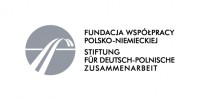
Exhibition and conference held under the patronage of Eunic:

Exhibition and conference partners:





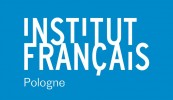

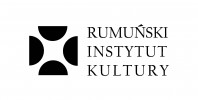







The project was implemented with the financial support of the Capital City of Warsaw activities in the area of revitalization of the Capital City of Warsaw. Warsaw:

